How Web3's DePIN Protocols Will Revolutionize the World
DePIN protocols may have the highest "sticky factor" for onboarding new users to crypto and Web3. Find out why in this article.

Imagine: Instead of Google Maps harvesting users' data for its own profit...instead of Uber taking a huge cut of their drivers' fares and increasing prices for riders...instead of any giant corporation turning profits off its users, users earn profits from participating in a DePIN service.
DePIN, or a Decentralized Physical Infrastructure Network, uses blockchain technology to manage and decentralize essential services. By distributing control and rewarding users with tokens, DePIN makes services more efficient and equitable for all participants.
How does DePIN work?
By distributing control and rewarding users with crypto tokens, DePIN incentivizes user participation. Essentially, if you do something that is positive for a network or application, you earn tokens that can either be used to vote on the future of the protocol, or you can sell them on the market for cash.
This Lever.io article covers the basics of DePIN, its operations, and real-world applications. We'll argue that DePIN protocols may have the highest "sticky factor" for onboarding new users to crypto and Web3. With that said, influencer marketing, content marketing, and Web3 digital marketing will be essential to promoting these revolutionary brands and accelerating their growth.
Key Takeaways
- DePINs (Decentralized Physical Infrastructure Networks) utilize blockchain technology to manage decentralized networks, promoting efficiency, resilience, and equitable access to services through tokenization and decentralized control.
- The evolution of DePIN technology has been marked by pioneering projects like Helium, Hivemapper, Render, Shdw Drive, and Teleport leading to a diverse ecosystem with over 650 ongoing DePIN projects, illustrating the scalability and innovative potential of decentralized infrastructure.
- Despite their advantages, DePINs face challenges including regulatory hurdles, scalability limitations, security concerns, and significant infrastructure requirements, all of which must be addressed to promote widespread adoption and sustainability.
What is DePIN (Decentralized Physical Infrastructure Network)?

DePIN stands for Decentralized Physical Infrastructure Networks, a groundbreaking concept where blockchain technology breathes life into the management and operation of an application or service that is otherwise bound to Web2 inefficiencies.
With the aid of blockchain’s immutable and decentralized features, DePINs distribute power and control over essential services among participants, rather than being in the hands of centralized authorities. The decentralized physical infrastructure network approach fosters a system of value creation for users, one where efficiency and equitable access to services are not just ideals, but a tangible reality.
Within this framework, tokenization becomes the heartbeat of the network, incentivizing and rewarding the collective efforts of those who contribute to its maintenance and growth. For example, when a major telecom farms out $20 WiFi passes using a subscriber's router, the subscriber earns nothing---however, with a DePIN WiFi services, the user would earn tokens as rewards.
The DePIN infrastructure thus becomes a living entity, adapting and thriving through the transparent and trustless interactions blockchain technology facilitates. As our understanding of DePINs deepens, terms such as EdgeFi and Token Incentivized Physical Networks (TIPIN) represent a future of seamless integration between the digital and physical realms.
The Evolution of DePINs from Bitcoin to Programmable Blockchains

Blockchains have come a long way since the Bitcoin network first launched, and they have become programmable distributed networks capable of hosting decentralized applications (dApps). Here is a short rundown of the history of DePIN, from Bitcoin to now.
Origins and Early Concepts
The concept of Decentralized Physical Infrastructure Networks (DePIN) has its roots in the early 2010s, with the advent of blockchain technology and the rise of decentralized digital assets. Initially, blockchain was primarily associated with cryptocurrencies like Bitcoin. However, visionaries soon realized that the technology's potential extended far beyond digital currencies.
The idea of using blockchain to manage and optimize physical infrastructure emerged around this time. Early proponents of DePIN recognized that decentralized ledgers and smart contracts could revolutionize the management of various physical assets, from energy grids to transportation systems.
Early Implementations and Proof of Concepts
The first practical implementations of DePIN began to appear in the mid-2010s. These early projects were often small-scale proof-of-concept initiatives aimed at demonstrating the feasibility of using blockchain to manage physical infrastructure.
One notable early project was the Brooklyn Microgrid in New York, launched in 2016. This project used blockchain technology to enable peer-to-peer energy trading among residents, allowing them to buy and sell excess solar energy directly to their neighbors. The success of the Brooklyn Microgrid proved that blockchain could be used to manage decentralized energy resources effectively.
Expansion and Diversification
As blockchain technology matured, so did the applications of DePIN. By the late 2010s, a broader range of sectors began to explore decentralized physical infrastructure networks. The energy sector continued to be a significant focus, with projects like Power Ledger in Australia facilitating peer-to-peer energy trading on a larger scale.
Simultaneously, the transportation sector began to see the potential of DePIN. Companies like DOVU and MOBI (Mobility Open Blockchain Initiative) started to develop decentralized solutions for transportation logistics, vehicle identity management, and mobility data sharing.
Integration with IoT and AI
The integration of Internet of Things (IoT) devices and Artificial Intelligence (AI) with DePIN marked a significant evolution in the early 2020s. IoT devices provided the necessary data streams and real-time monitoring capabilities, while AI helped optimize the management of physical infrastructure through advanced analytics and predictive maintenance.
For example, smart cities began to leverage DePIN to manage various urban systems, including waste management, traffic control, and public utilities. IoT sensors collected data on these systems, which was then processed and managed through decentralized networks, enabling more efficient and responsive urban management.
The Rise of Decentralized Autonomous Organizations (DAOs)
The emergence of Decentralized Autonomous Organizations (DAOs) further propelled the evolution of DePIN. DAOs provided a governance framework for decentralized networks, allowing stakeholders to participate in decision-making processes transparently and democratically.
Projects like Helium and Helios utilized DAO structures to govern decentralized wireless networks and energy grids, respectively. These projects demonstrated how community-driven governance could effectively manage and expand decentralized physical infrastructure.
Enterprise-grade Blockchains Allow for Unparalleled Growth
With the advent of next-generation blockchains like Solana, Aptos, and Sui, DePIN protocols have found homes in Web3 that rival the speed of Web2 internet. While Web2 applications are hosted on centralized servers, they also serve to enrich centralized corporations that turn users into profit margins.
The addition of a value layer (where tokens with monetary value can be dispersed to users' private wallets) with the speed of a network like Solana, DePIN projects can run their applications on the same network they use for payments, cutting out hordes of middlemen who leech profits from users, giving those profits to users instead.
How DePINs Operate with Web3 Incentives
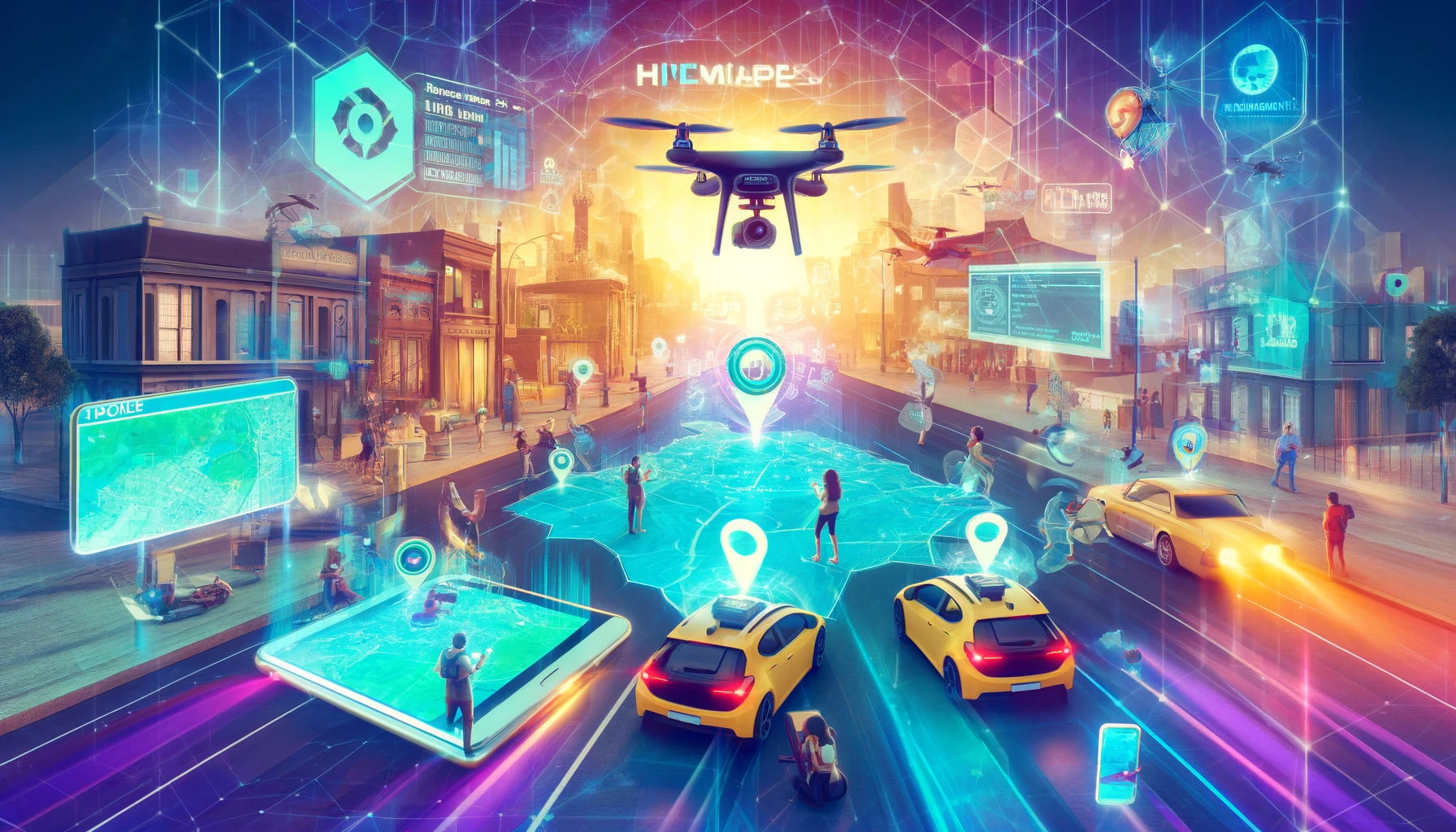
At the core of a DePIN lies the off-chain network, a collective of users and service providers who interact in a decentralized fashion. Tokenization, akin to a magic wand, empowers global individuals to contribute towards the construction and maintenance of these networks, since there is some monetary reward for doing so.
Blockchain architecture supports the token economy, guaranteeing fair execution of every transaction. The promise of tokens might be the greatest marketing tool of all time for attracting new users, possibly better than social media marketing and (shhh) influencer marketing.
Oracles bridge the gap between the off-chain and on-chain worlds, connecting real-world data to the blockchain, while the blockchain itself serves as a transparent ledger for payments and transactions. Smart contracts encode the rules of engagement, defining security, native tokens, and other fundamental components of a DePIN.
Token incentives, whether static or dynamic, reward service providers and foster network growth, illustrating a model where everyone involved has a stake in the network’s success.
Types of DePINs: PRNs vs. DRNs
DePINs, also known as depin networks, are an intricate web of networks that can be broadly categorized into two types: Physical Resource Networks (PRNs) and Digital Resource Networks (DRNs).
PRNs are the tangible backbone of the DePIN world, offering crypto incentives for the deployment of location-dependent hardware – from servers that power cloud networks to solar panels that energize sustainable energy ecosystems. These tangible infrastructures are the pillars upon which physical infrastructure networks rest, and they are essential physical infrastructure resources.
DRNs, on the other hand, manage the intangibles:
- the data
- information
- software
- digital services
that flow through the veins of the digital infrastructure. While PRNs require physical presence and hardware resources, DRNs thrive on the cerebral, often existing solely in the realm of 0s and 1s.
Yet, both are integral to the DePIN ecosystem, each serving unique roles in the grand scheme of decentralized technologies.
Key Use Cases for DePINs
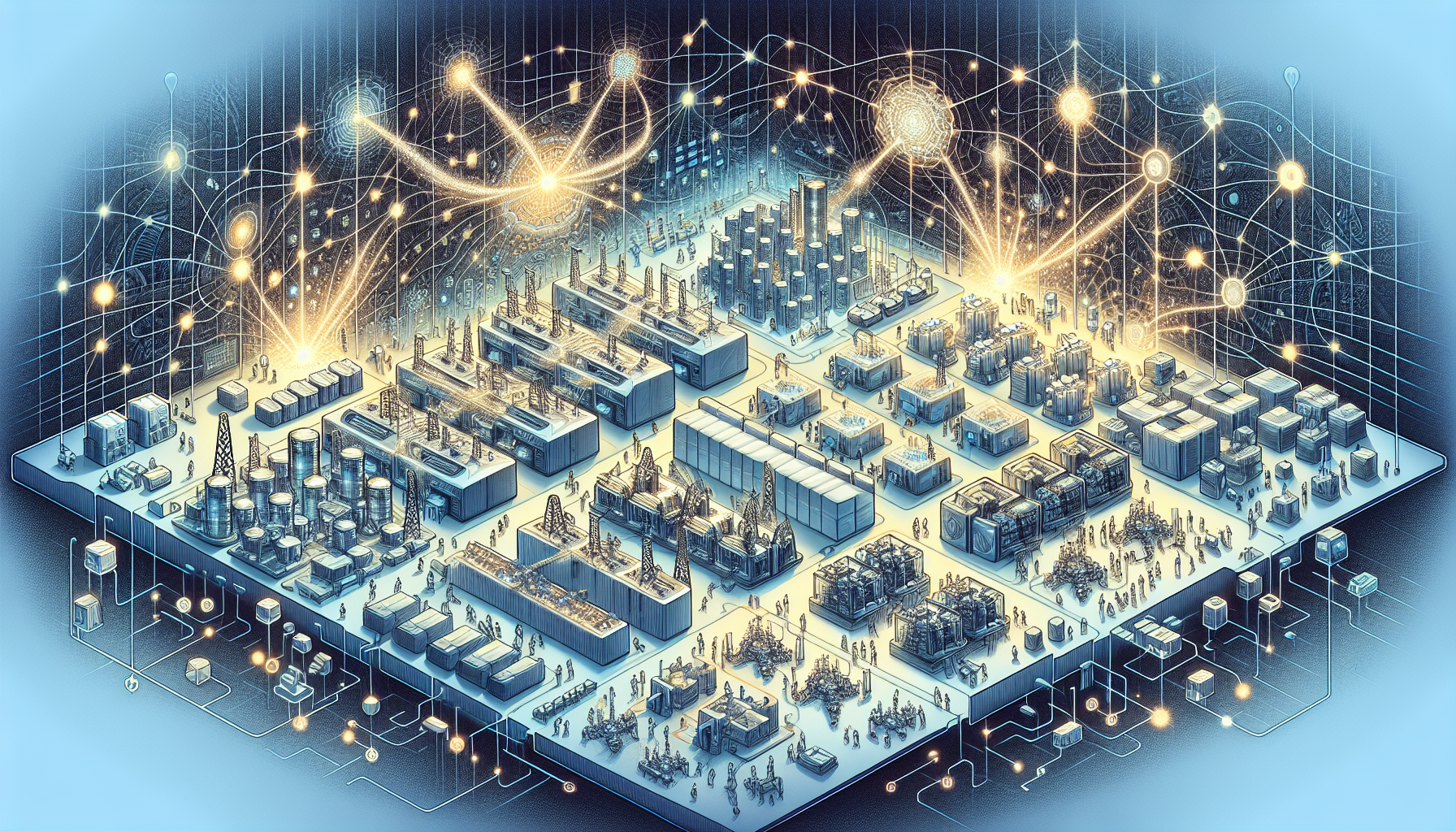
DePINs have diverse and significant applications. Some examples include:
- Filecoin, which revolutionizes data storage by allowing individuals to rent out unused storage space in exchange for cryptocurrency
- Storj, which provides decentralized cloud storage, ensuring that data is encrypted and distributed for enhanced security
- Decentralized power grids that facilitate peer-to-peer energy trading
- Telecommunications networks that connect remote areas
DePINs are redefining resource utilization in various industries.
Moreover, the reach of DePINs extends to sectors like:
- Healthcare, where personalized medicine leverages AI for better patient outcomes
- Education, where decentralized platforms offer learning opportunities in the remotest corners
- Supply chain management, with transparent tracking
- DeFi, enabling lending systems that bypass traditional financial institutions
It’s a testament to the ingenuity of DePIN developers and the broad spectrum of use cases that DePIN technology can address.
Advantages of DePINs Over Traditional Models

The transition from centralized to decentralized models brings numerous benefits. DePINs offer:
- Cost efficiency by sidestepping intermediaries that typically inflate costs in centralized networks
- Scalability achieved with remarkable fluidity, circumventing the need for heavy investments that characterize traditional models
- Improved security through decentralized data storage, reducing risks associated with centralized entity control
These advantages make DePINs a more resilient alternative.
Decentralized infrastructure offers several benefits, including the potential for a decentralized GPU rendering platform. The rules of the game are not dictated by a centralized corporation but by the community itself, which has a direct say in governance.
This democratic process is underpinned by blockchain’s immutable record-keeping, ensuring transparency and security for all network participants. Personal control over data that DePINs provide is empowering and a bulwark against privacy intrusions.
Challenges Facing DePIN Adoption in 2024
Despite DePINs’ potential, several challenges hinder their widespread adoption. These challenges include:
- Regulatory hurdles, which present a complex landscape for DePIN projects to navigate
- Scalability limitations, which call for innovative solutions to accommodate growing user bases
- Infrastructure requirements for integrating blockchain with physical systems, which often demand substantial upfront investments.
Of all of these issues, scalability has plagued DePIN projects the most over their short life. These problems may soon be over, though, as faster and more scalable blockchains build their network effects.
For example, Helium Network deprecated its own blockchain in favor of building on the Solana Layer 1, allowing users to participate in Helium with access to a full range of other services hosted on Solana such as decentralized finance (DeFi) exchanges (DEXs) for swapping earned tokens into stablecoins.
The DePIN Flywheel Effect
Despite the challenges, the DePIN flywheel effect shines through, promoting network growth and sustainability. This virtuous cycle starts when increased usage of the network leads to a rise in token prices, which in turn incentivizes contributors to further invest in the network’s development.
As more people deploy hardware and resources, a DePIN network’s capacity expands, attracting even more users and, by extension, "growing the pie."
The Helium Network exemplifies the DePIN flywheel in action, as it motivated individuals to help create the world’s largest IoT distributed network in record time. Helium's LoRaWAN network spans the globe, and it is maintained entirely by users who earn Helium's tokens as reward.
This self-reinforcing cycle is a testament to the potential of token incentivized physical networks, where each contribution enhances the network’s value, creating a compelling case for continued investment and expansion.
It’s a powerful demonstration of how decentralized networks can harness the collective power of individual contributions for mutual benefit.
Future Trends in DePIN Technology
Looking ahead, DePIN technology stands at the crossroads of some of the most advanced sectors and technologies. From the integration of AI to the incorporation of meme coins and on-chain gaming, DePINs are set to transcend their current capabilities.
Some potential future developments for DePINs include:
- Privacy solutions leveraging Zero-Knowledge technology to enhance user confidentiality
- Integration of advanced AI algorithms for improved functionality
- Incorporation of meme coins and on-chain gaming for enhanced user engagement
These advancements will further enhance the potential of DePINs and provide new solutions to address emerging challenges and user needs.
These future integrations are not just speculative musings but are grounded in the current trajectory of DePIN developments. The intertwining of blockchain with artificial intelligence, for instance, could revolutionize data storage and processing, opening up new avenues for digital infrastructure and services.
As the DePIN ecosystem evolves, it will undoubtedly continue to surprise and inspire, heralding a new era of decentralized technologies. If there is a parallel service in Web2, a decentralized physical infrastructure network can probably build a better model in Web3.
Prominent DePIN Projects Making Waves Today
Among the myriad of DePIN projects, a few stand out for their pioneering spirit and tangible impact. Some notable projects include:

- Helium redefined wireless connectivity and demonstrated the effectiveness of the DePIN flywheel, achieving global reach with its decentralized wireless network.
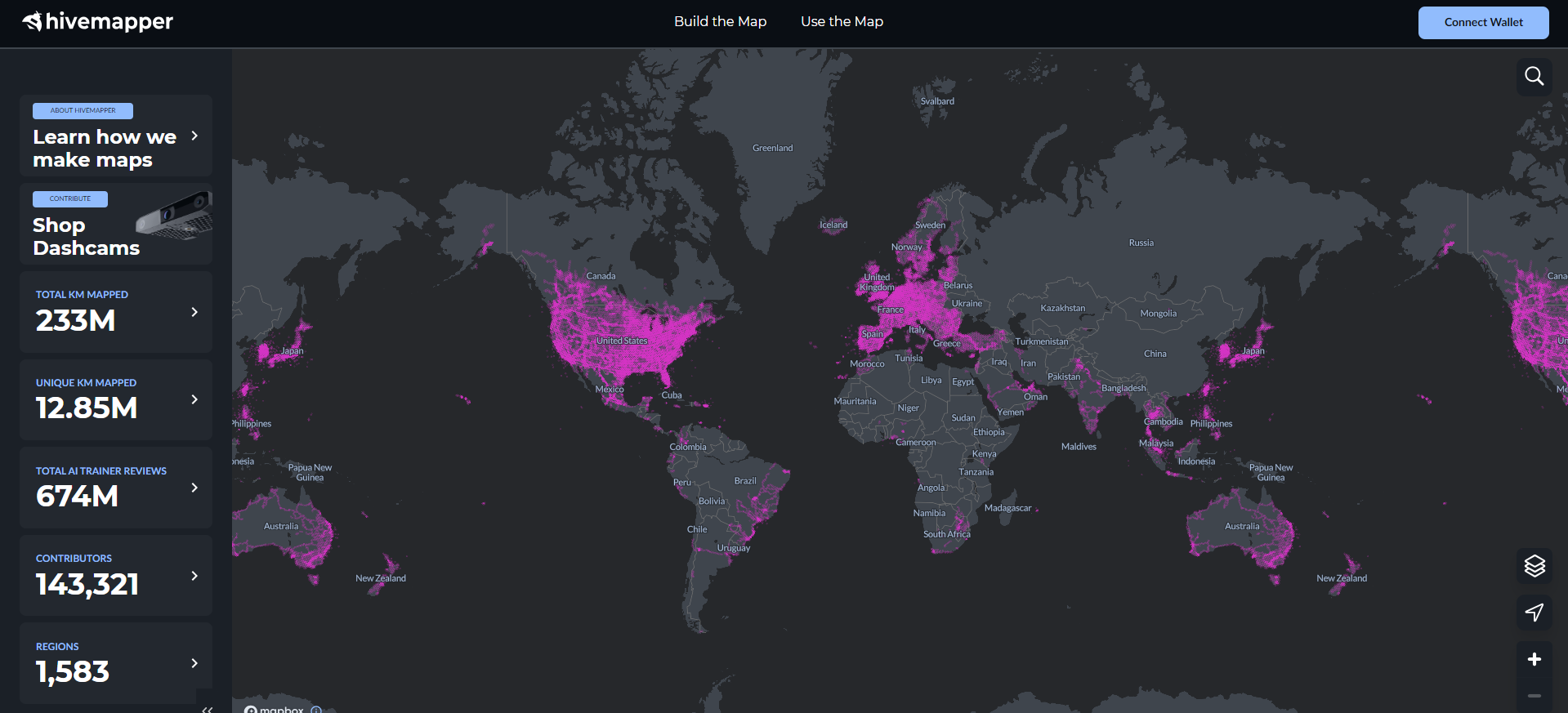
- Hivemapper offers a decentralized mapping service that challenges traditional models, similar to a Web3 Google Maps.
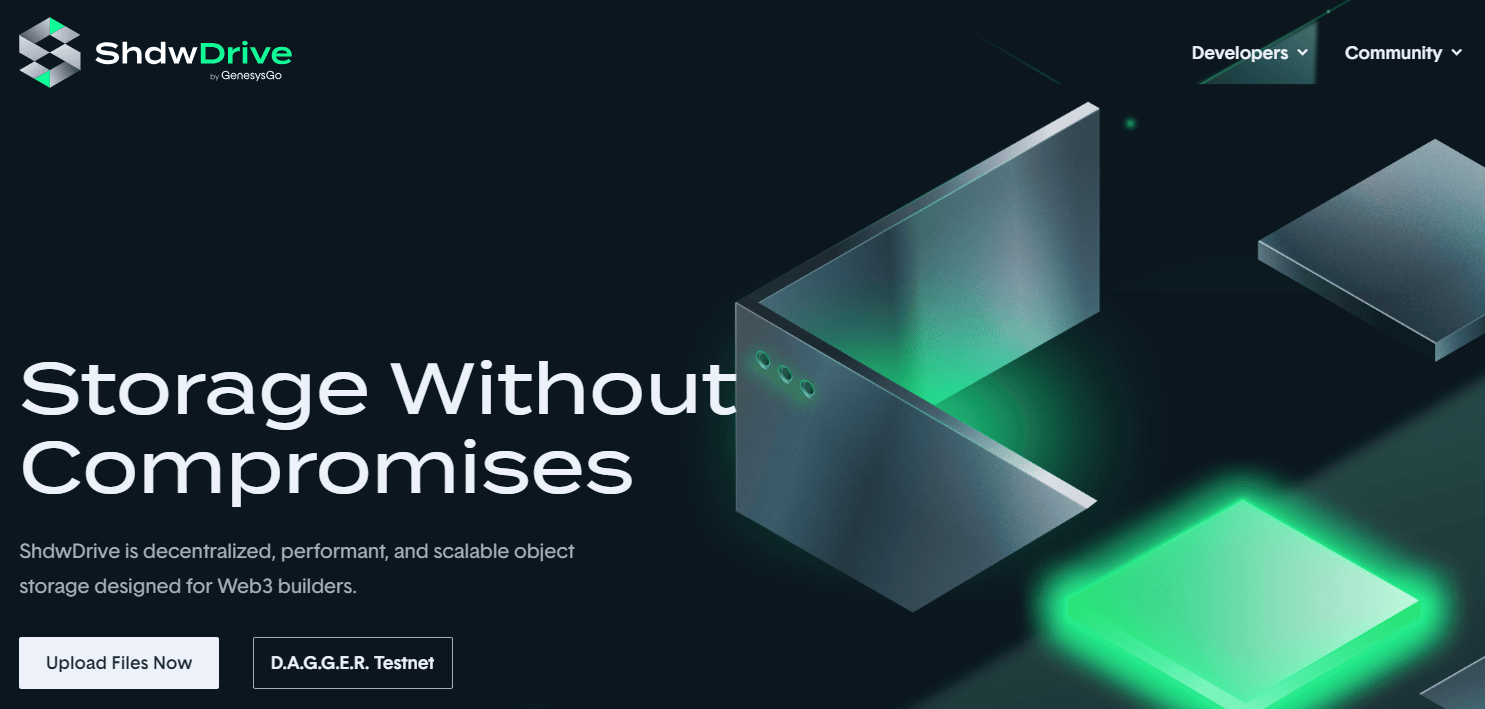
- Shdw Drive brings decentralized cloud storage to the forefront, leveraging Solana’s scalability and speed for enhanced efficiency.
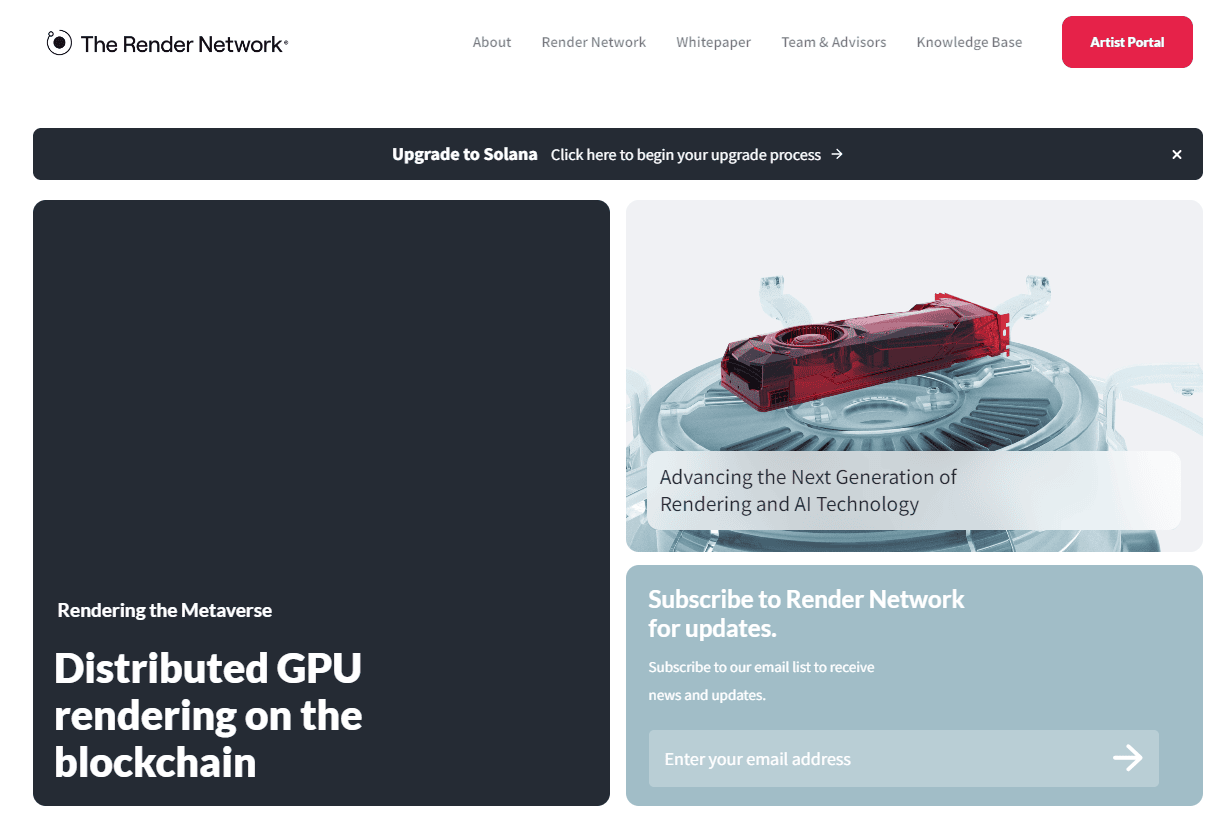
- Render decentralizes access to high-computing power for visual arts like film and motion picture desing, rewarding users for providing access to untapped GPU.

- Teleport provides a Web3 alternative to Uber, Lyft, and other rideshare services that have been accused of exploitative practices for years.
These projects showcase the innovation and potential of the DePIN ecosystem, and they've proven to be far more than vaporware. It's not just their token prices that reflect their success, but also daily active users are on the rise for each of these projects.
These projects underscore the versatility of DePINs, offering decentralized alternatives for a range of services that were once the sole domain of centralized platforms. By contributing resources and participating in these networks, individuals and organizations alike can play an active role in shaping the future of our physical and digital worlds.
It’s a movement that is not only redefining what is possible but also who gets to decide how technology serves humanity.
How DePIN Reaches Mainstream Audiences

Engaging mainstream audiences is the next big step for DePINs, with numerous potential pathways mirroring the diversity of the networks. By offering decentralized alternatives to services like Uber and Google Maps, DePINs can appeal to everyday users who seek more control and fairness in the services they use.
However, familiarizing new users with concepts like crypto wallets remains a significant hurdle to adoption. Tokenization is key here, empowering users to earn from their participation and thus incentivizing their engagement with the network.
As the network grows, so does the value proposition for both network participants and potential investors. This growth fosters community governance and peer-to-peer collaboration, further solidifying the network’s development in a decentralized manner.
For DePINs to truly break into the mainstream, they must continue to simplify user experiences and demonstrate real-world utility that resonates with a broad audience, beyond the early adopters and tech enthusiasts.
Lever.io Simplifies Influencer Marketing for DePIN Projects in 2024

To reach mainstream audiences, DePIN projects can leverage Lever.io, our comprehensive Web3 influencer marketing platform that simplifies the intricate world of influencer partnerships. With Lever.io, Web3 startups can:
- Benefit from advanced filtering capabilities to find influencers who resonate with their target audience
- Ensure collaborations with micro-influencers and macro-influencers who have a genuine interest in a project
- Streamline the process of influencer partnerships and maximize reach, fast
- Propel DePIN projects into the spotlight and gain exposure to a wider audience.
If you’re a DePIN developer or project manager looking to amplify your reach, consider Lever.io as your navigator in the vast ocean of influencer marketing. By connecting with the right voices in the community, your project can gain the visibility and credibility it needs to thrive.
Don’t let your innovations go unnoticed; harness the power of influencer marketing with Lever.io and watch your DePIN project soar.

